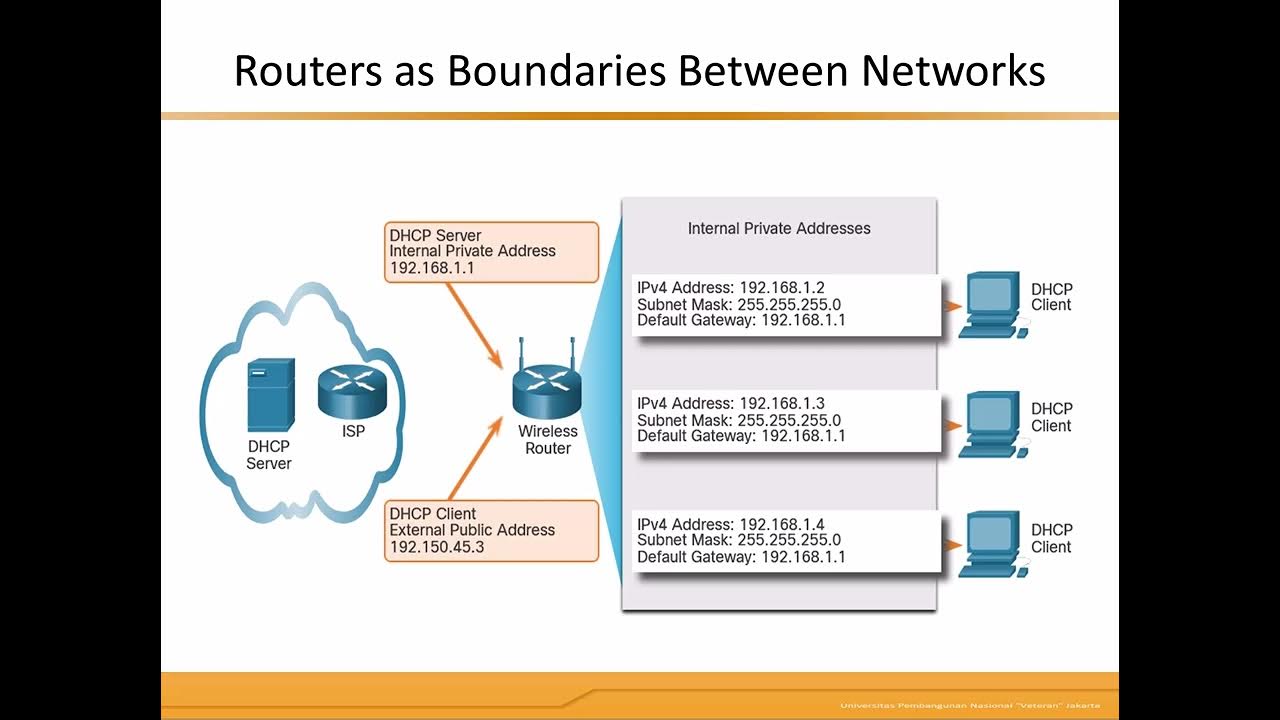Every Networking Concept Explained In 8 Minutes
Summary
TLDRThis video explains essential networking concepts such as VPNs, DNS, DHCP, NAT, VLANs, routers, switches, firewalls, and more. It covers how each technology enhances security, manages data flow, and enables efficient communication across networks. From ensuring privacy through encryption with VPNs to routing data across vast networks with BGP, the script delves into the core components of modern networking. Understanding these fundamentals is crucial for anyone pursuing a career in IT or networking, offering a solid foundation before moving on to more advanced topics.
Takeaways
- 😀 VPN creates a secure, encrypted connection between your device and a remote server, protecting your data on public networks and accessing restricted content.
- 😀 DNS is like the internet's phone book, converting domain names into IP addresses to make browsing easier without remembering long numbers.
- 😀 DHCP automatically assigns IP addresses to devices within a network, eliminating the need for manual configuration.
- 😀 NAT modifies the source or destination IP addresses of packets, allowing multiple devices on a local network to share a single public IP address.
- 😀 VLANs create logically separated networks within a physical network, improving security, performance, and traffic management.
- 😀 Routers connect different networks and use IP addresses to route data, while also providing features like firewalls and DHCP services.
- 😀 Switches use MAC addresses to forward data within a local network, ensuring data reaches the correct device.
- 😀 Firewalls monitor and control network traffic, protecting internal networks from unauthorized access, cyber attacks, and viruses.
- 😀 The OSI model divides network communication into seven layers, from the physical transmission of data to interaction with software applications.
- 😀 VoIP enables voice and video communication over the internet, offering a cost-effective alternative to traditional phone systems.
- 😀 SD-WAN and load balancing techniques improve network efficiency, security, and performance by optimizing data flow and distribution.
Q & A
What is the primary purpose of a VPN?
-A VPN (Virtual Private Network) creates a secure, encrypted connection between your device and a remote server, helping protect your data, especially on public Wi-Fi networks, and enabling access to restricted content by masking your real IP address.
How does DNS function in networking?
-DNS (Domain Name System) acts as the internet's phone book, translating human-readable domain names like 'www.google.com' into corresponding IP addresses, allowing users to access websites without needing to memorize numerical IPs.
What role does DHCP play in networking?
-DHCP (Dynamic Host Configuration Protocol) automatically assigns IP addresses to devices within a network from a predefined pool, eliminating the need for manual configuration when devices connect.
What is the purpose of NAT in a network?
-NAT (Network Address Translation) modifies the source or destination IP addresses of packets passing through a router, enabling multiple devices within a local network to share a single public IP address.
How does VLAN improve network security and performance?
-VLAN (Virtual Local Area Network) allows network administrators to logically separate devices into different groups within the same physical network. This isolation enhances security, reduces unnecessary traffic, and improves network performance and manageability.
What are the functions of a router in a network?
-A router connects different networks, such as a local network to the internet. It uses IP addresses to determine the best route for data, and provides additional services like firewalls, NAT, and DHCP, ensuring efficient communication between networks.
What is the difference between a router and a switch?
-A router connects different networks and directs data traffic between them, while a switch connects devices within the same network and forwards data based on MAC addresses to ensure proper delivery.
How does a firewall protect a network?
-A firewall monitors and controls incoming and outgoing network traffic, acting as a barrier between the internal network and external threats. It blocks unwanted traffic and allows safe communication based on predefined security rules.
What are the seven layers of the OSI model?
-The OSI model divides network communication into seven layers: 1) Physical, 2) Data Link, 3) Network, 4) Transport, 5) Session, 6) Presentation, and 7) Application, each layer handling specific network functions from data transmission to user interaction.
What is the function of ARP in a network?
-ARP (Address Resolution Protocol) maps an IP address to its corresponding MAC address within a local network, ensuring that data reaches the correct physical device when devices communicate within the same network.
Outlines

This section is available to paid users only. Please upgrade to access this part.
Upgrade NowMindmap

This section is available to paid users only. Please upgrade to access this part.
Upgrade NowKeywords

This section is available to paid users only. Please upgrade to access this part.
Upgrade NowHighlights

This section is available to paid users only. Please upgrade to access this part.
Upgrade NowTranscripts

This section is available to paid users only. Please upgrade to access this part.
Upgrade NowBrowse More Related Video

Top 50 🔥 Network Administrator Interview Questions and Answers

Basics of Networking for Beginners | Getting Started With Networking | Computer Networks|Simplilearn

How router works | what is router? full Explanation | Computer Networking

Cours réseaux N°14 | équipements d'interconnexion (troisième partie) Par Dr MA.Riahla

Fungsi, Bagian dan Cara Kerja Router

Gateways to Other Network
5.0 / 5 (0 votes)